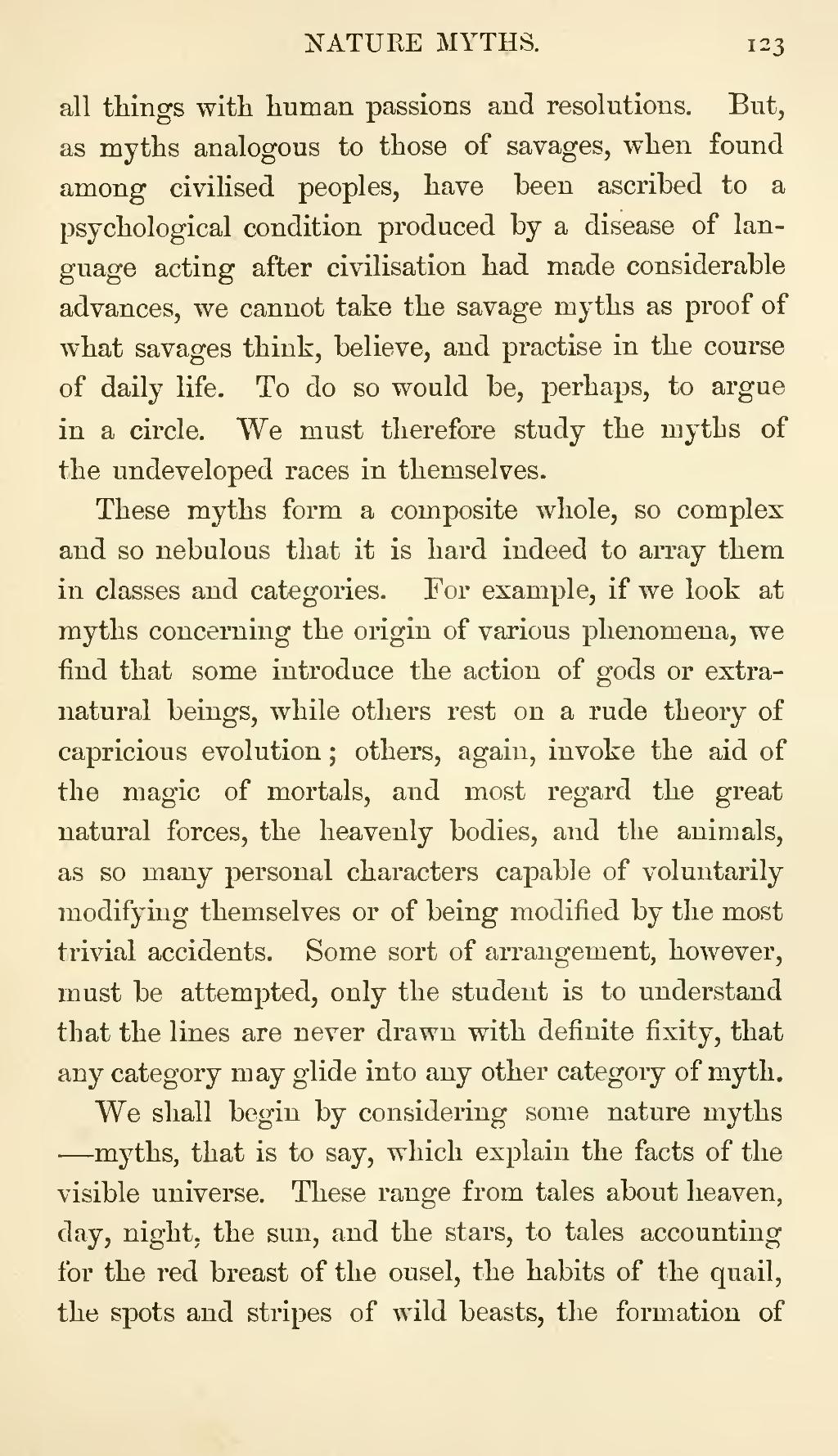all things with human passions and resolutions. But, as myths analogous to those of savages, when found among civilised peoples, have been ascribed to a psychological condition produced by a disease of language acting after civilisation had made considerable advances, we cannot take the savage myths as proof of what savages think, believe, and practise in the course of daily life. To do so would be, perhaps, to argue in a circle. We must therefore study the myths of the undeveloped races in themselves.
These myths form a composite whole, so complex and so nebulous that it is hard indeed to array them in classes and categories. For example, if we look at myths concerning the origin of various phenomena, we find that some introduce the action of gods or extra-natural beings, while others rest on a rude theory of capricious evolution; others, again, invoke the aid of the magic of mortals, and most regard the great natural forces, the heavenly bodies, and the animals, as so many personal characters capable of voluntarily modifying themselves or of being modified by the most trivial accidents. Some sort of arrangement, however, must be attempted, only the student is to understand that the lines are never drawn with definite fixity, that any category may glide into any other category of myth.
We shall begin by considering some nature myths—myths, that is to say, which explain the facts of the visible universe. These range from tales about heaven, day, night, the sun, and the stars, to tales accounting for the red breast of the ousel, the habits of the quail, the spots and stripes of wild beasts, the formation of
